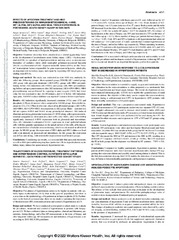Приказ основних података о документу
Effects of apocynin treatment and HBO preconditioning on immunohistochemical 4-HNE, HIF alpha, HIF2 alpha and NGAL tissue expression in postiscemic acute kidney injury in SHR rats
| dc.creator | Kovačević, Sanjin | |
| dc.creator | Ivanov, Milan | |
| dc.creator | Životić, Maja | |
| dc.creator | Brkić, Predrag | |
| dc.creator | Miloradović, Zoran | |
| dc.creator | Jeremić, Rada | |
| dc.creator | Mihailović-Stanojević, Nevena | |
| dc.creator | Vajić, Una Jovana | |
| dc.creator | Karanović, Danijela | |
| dc.creator | Jovović, Đurđica | |
| dc.creator | Nešović Ostojić, Jelena | |
| dc.date.accessioned | 2024-01-30T23:17:06Z | |
| dc.date.available | 2024-01-30T23:17:06Z | |
| dc.date.issued | 2022 | |
| dc.identifier.uri | http://rimi.imi.bg.ac.rs/handle/123456789/1440 | |
| dc.description.abstract | Objective: Oxidative stress has been considered as a central aggravating factor in the development of postischemic acute kidney injury (AKI). 4-hydroxynonenal (4-HNE) is a product of lipid peroxidation and may serve as non-invasive biomarker of oxidative stress while neutrophil gelatinase-associated lipocalin (NGAL) is a biomarker of AKI. Hypoxia-inducible factors (HIFs) are the “master’’ transcription factors responsible for gene expression in hypoxia, which play an important role in kidney injury and repair by regulating HIF target genes, including microRNAs. Design and method: The study was conducted on male SHR rats, randomly divided into following groups: sham-operated group (SHAM) AKI control group, AKI group with apocynin treatment (AKI+APO), group with HBO preconditioning before AKI induction (AKI+HBO) and group with HBO preconditioning before and apocynin treatment after AKI induction (AKI+APO+HBO). HBO preconditioning was performed by exposing to pure oxygen (2.026 bar) twice a day for two consecutive days for 60 minutes, and 24 h before AKI induction. Apocynin, NADPH oxidase inhibitor was injected 5 minutes before reperfusion. Results: AKI induction significantly decreased creatinine (CCr), urea (CU) and phosphate (CPhos) clearances when compared to SHAM group. Remarkable increase in CCr, CU, CPhos levels were observed in all treated groups (AKI+APO, AKI+HBO, AKI+APO+HBO) in comparison to AKI group. Sham – operated rats did not express 4-HNE and NGAL in any parenchymal structure. AKI induced abundant and strong glomerular expression of 4-HNE along with expression in interstitial compartment. All treatments (AKI+APO, AKI+HBO, AKI+APO+HBO) significantly decreased 4-HNE expression both in glomeruli and interstitium. Also, AKI stimulated widespread NGAL expression in renal epithelial tubular cells with fine granular appearance on the apical surface of the cells, affecting entire circumference of tubular cross-sectioning, which was decreased in all treated groups. In SHAM group, the expression of HIF1 alpha and HIF2 alpha was focal with weak intensity in glomeruli and interstitium. In AKI group, the expression was diffuse and strong, with remarkable improvement in all treated groups. Conclusions: Considering our results, we can conclude that apocynin treatment, as well as HBO preconditioning may have protective effects in postischemic acute kidney injury induced in spontaneously hypertensive rats. | sr |
| dc.language.iso | en | sr |
| dc.publisher | Wolters Kluwer Health, Inc. | sr |
| dc.rights | openAccess | sr |
| dc.source | Journal of Hypertension | sr |
| dc.title | Effects of apocynin treatment and HBO preconditioning on immunohistochemical 4-HNE, HIF alpha, HIF2 alpha and NGAL tissue expression in postiscemic acute kidney injury in SHR rats | sr |
| dc.type | conferenceObject | sr |
| dc.rights.license | ARR | sr |
| dc.rights.holder | Wolters Kluwer Health, Inc. | sr |
| dc.citation.issue | Suppl 1 | |
| dc.citation.spage | e251 | |
| dc.citation.volume | 40 | |
| dc.identifier.doi | 10.1097/01.hjh.0000838064.87501.71 | |
| dc.identifier.fulltext | http://rimi.imi.bg.ac.rs/bitstream/id/3365/effects_of_apocynin_treatment_and_hbo.693.pdf | |
| dc.type.version | publishedVersion | sr |

